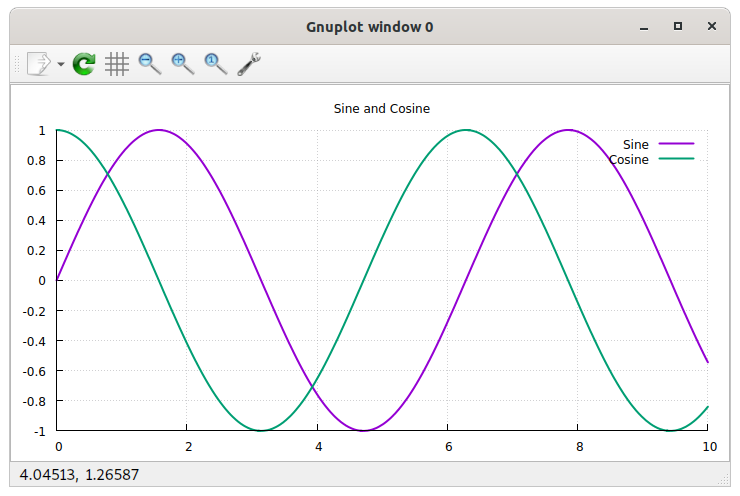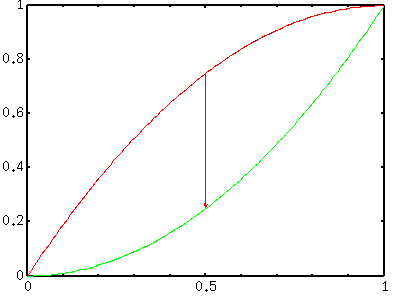

My situation is that I get about a hundred of these logfiles a day, times 25 Using multiple environment variables in gnuplot With the axis starting from zero, the graph looks like this: The first number (the zero) is the starting range. Relative to the lowest value in your CSV.

Plot plot.csv using 1:2 with lines, '' using 1:3 with lines, '' using 1:4 with lines axis x1y2 # new plot commandĪs you can see, the second Y axis doesn't start from zero. Set y2label "Second Y Axis Value" # label for second axis Set ytics nomirror # dont show the tics on that side The last column in our CSV file is a different unit but influences the other The legend is correct, and we have axis labels. Set ylabel "First Y Units" # label for the Y axis Set key autotitle columnhead # use the first line as title We'll also add a label to the X and Y axis: set datafile separator ',' The CSV file has column headers in the first line: "datetime","targetValue","measuredValue","secondYAxisValue", Legend has the plot commands, there is no grid and we're missing our second YĪxis. But the graph is still a bit hard to read. The basics are there, our two lines on the Y axis and Set format x "%H:%M:%S" # otherwise it will show only MM:SS Set timefmt "%Y-%m-%dT%H:%M:%S" # specify our time string format Set xdata time # tells gnuplot the x axis is time data
#Gnuplot point types update
Update your gnuplot file: set datafile separator ',' Let's tell gnuplot to use the first column as x axis datetime and The first column of our CSV file contains the date and time in an ISO8601įormat. Using the first column as x axis date time Run gnuplot, with -p to make the window persist: gnuplot -p example.gnuplot The first line tells gnuplot to use a comma instead of whitespace to seperate Plot plot.csv using 1:2 with lines, '' using 1:3 with lines Create a file namedĮxample.gnuplot in the same folder as your csv file and put the following in Let's start with the basic setup and command. Here is a picture of the finished result we're working towards: To append some data to the title of the graph. Not valid CSV, but we'll use that inside gnuplot

#Gnuplot point types software
The data is fromĪnother piece of software I've written and contains extra information, but that The article will go over the different topics step by step. You canįind my example CSV data at the bottom of this article. I'm using gnuplot 5.2 on Ubuntu 18.04, installed via the repository. With this referral link you'll get $100 credit for 60 days. You can also sponsor me by getting a Digital Ocean VPS. It means the world to me if you show your appreciation and you'll help pay the server costs. Go check it out!Ĭonsider sponsoring me on Github. I'm developing an open source monitoring app called Leaf Node Monitoring, for windows, linux & android. Please, if you found this content useful, consider a small donation using any of the options below: Recently I removed all Google Ads from this site due to their invasive tracking, as well as Google Analytics. The data in this article is masked, but that I've got an article published here where you can read howto make aīar-chart (histogram) with gnuplot. Styling (grid, line type, colour, thickness).Using multiple environment variables in gnuplot.Parsing the first column as a date/time.Such" in Excel to get a consistent result. Give me a configfile and command over "do this, then this and then such and Not only is it very extensible, it is also reproducable. My goto favorite tool for graphs andĬharts is gnuplot. LookingĪt a bunch of text is not the same as seeing things graphically, this particular Gnuplot has the steps plotting style to achieve this, but we have to be carefully regarding our (x,y) variables.Recently I had to do some testing which resulted in a lot of log data. Now assume that we also want to add steps going from point to point as shown in Fig. Note, that the addition is always performed first, before the resulting point is plotted which means we get no point at (0,0). Here, we define the starting point to be (0,0) and add to it the values from the first and second column for every line of the data file. If we want to plot that data in gnuplot we have to keep track of the current position manually by storing its (x,y) value as variables by Now suppose we have the same data points stored as relative coordinates in our data file, resulting in: This can be plotted in a straightforward manner and will result in Fig.


 0 kommentar(er)
0 kommentar(er)
